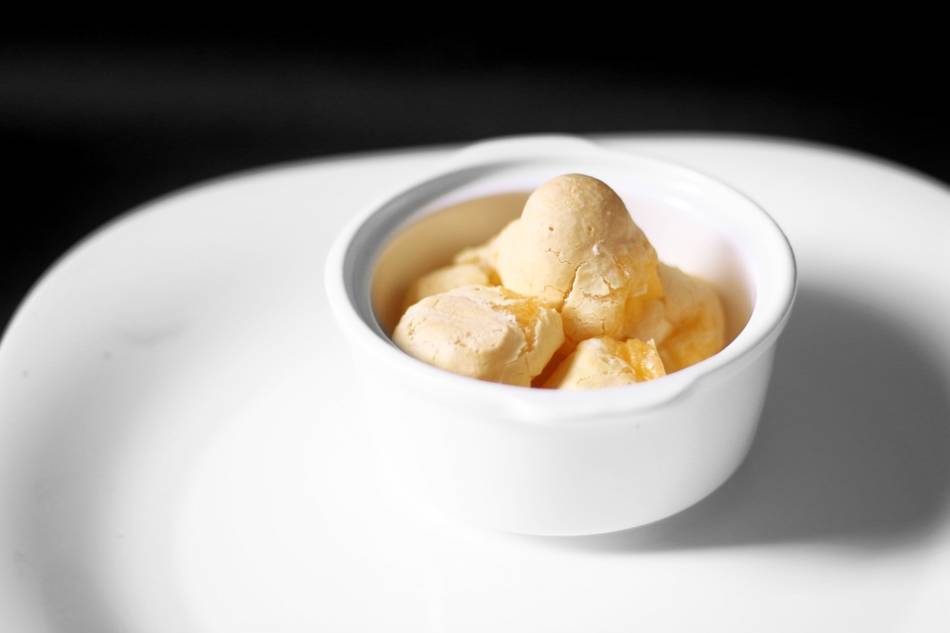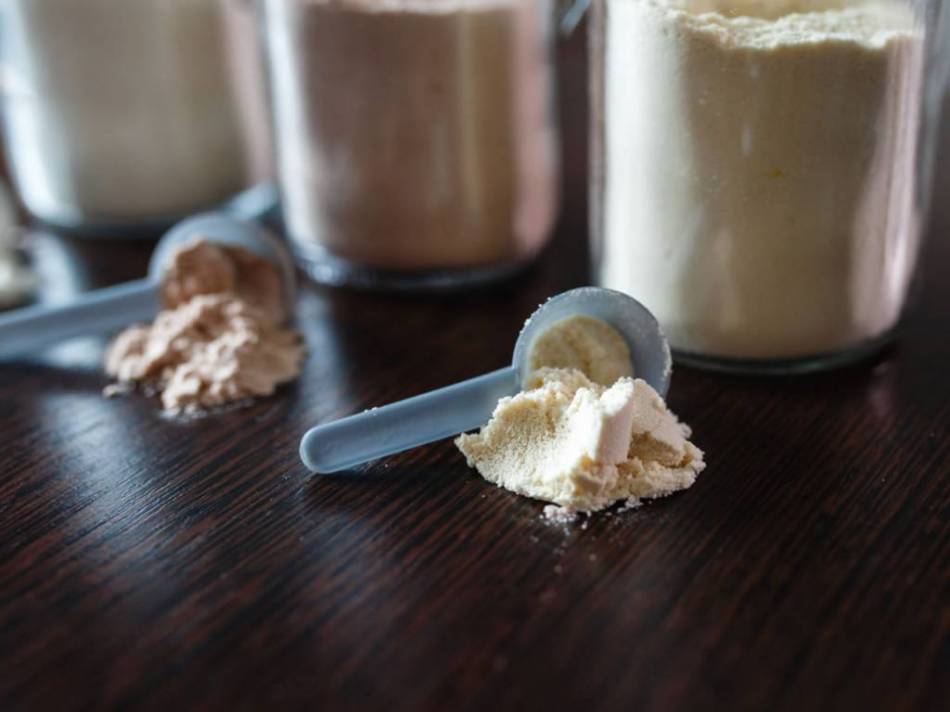
Casein or Whey, what to choose?

Milk is made up of two kinds of protein – casein and whey (also known as whey protein), which have proportions of around 80% and 20%. Both are excellent sources of complete protein containing all of the necessary amino acids, however the two sources differ in composition and also in their assimilation time. In this article, we will explain the major differences between these two proteins, their advantages and disadvantages, and the best possible use for them.
CASEIN AND WHEY: THANK YOU MILK!
Casein and whey are the two types of proteins found in cow’s milk, constituting 80% and 20% of the total, respectively. They are high quality proteins because they contain all the essential amino acids and are easily digested and absorbed. One or both of these proteins are naturally found in milk and dairy products.
Casein and whey protein contain different bioactive peptides, which are compounds that are beneficial for your immune, digestive and cardiovascular systems – they lower blood pressure and reduce blood clots. These peptides work similarly to angiotensin converting enzyme (ACE) inhibitors, a type of drugs commonly prescribed to control blood pressure. These peptides bind to and transport minerals like calcium and phosphorus, improving their digestibility in the stomach.
Active proteins called immunoglobulins – contained in casein and whey protein – strengthen the immune system, have antimicrobial properties, and kill or slow the growth of harmful microbes (bacteria and viruses). Some immunoglobulins carry important nutrients – like vitamin A – through your body and improve the absorption of other nutrients like iron.
There are many ways to produce these two types of protein, but the most common is: Adding enzymes or special acids to heated milk. These enzymes or acids cause the casein in milk to coagulate or turn into a solid state, separating from a liquid substance. Then, through curd treatments we obtain the casein in powder form.
The liquid substance, on the other hand, is the whey protein, which is then washed and dried (here too there are several processes for obtaining the finished product) in powder form for use in food products or food supplements.
WHEY OR WHEY PROTEIN
Six of the processes for obtaining the final whey protein powder are made up of three different forms of Whey Protein:
Concentrate (WPC) – The protein content ranges from 70 to 80%, the rest being mainly lactose (carbohydrate) and fat. This protein also has high levels of bioactive compounds.
If in the 80s the concentrate was obtained by aggressive thermal precipitation processes (the liquid sweetened milk was heated then acids were added to the mixture to precipitate the whey, which made it possible to solidify and immerse the whey at the bottom of the tank , which was then washed, centrifuged and dried); today it is obtained by a microfiltration method (successive mechanical filtering via filters of different sizes), which makes it possible to preserve the structure of the proteins obtained and all of its fractions.
Isolate (WPI) – The protein content of whey isolate ranges from 80% to 90%. It is practically free of lactose (therefore without carbohydrate and without digestive disorders) and lipids. Whey protein isolate has an excellent aminogram and undenatured amino acid chains.
There are several filtration methods to make whey isolate:
-
Filtration by ion exchange chromatography: Ion exchangers are used to separate whey molecules (by chemical reaction via anode and cathode, positive and negative charged molecules), which denatures the structure and can damage the proteins because requires the use of chemical adjuvants.
-
Microfiltration: This takes place through the thin membranes of ceramic filters. From milk and using pressure, the final protein is recovered in a natural way, without the use of chemical additives. This method preserves the structure of the protein and its components and removes all unwanted residues from the milk.
-
Ultrafiltration: Process of membrane separation under pressure of molecules using the appropriate filter for their size. As with microfiltration, this process does not denature the proteins and makes it possible to keep the active fractions intact (beta-lactoglobulin, alpha lactalbumin, bovine serum albumin, immunoglobulin G, lactoferrin and glycomacropeptides).
Hydrolyzate (WPH) – A hydrolyzed protein means that it is divided into small chains of amino acids called peptides. The hydrolysis process mimics the bodily digestive actions; therefore we can say that hydrolyzed proteins are predigested proteins.
Hydrolysis is made by an enzymatic process that cuts proteins into chains of amino acids. There is a breakdown of protein fractions into peptides, resulting in a finished product containing 0% lactose.
Hydrolyzed protein mainly contains di- and tripeptides and is absorbed faster than the free amino acid form, and much faster than whey or whey isolate (non-hydrolyzed protein). Thus, it allows to skip the stage of the digestion process and to promote its passage in the blood (absorption).
CASEIN
Among the processes that make it possible to obtain the final casein protein powder, there are two, making it possible to obtain two forms of protein:
Calcium Caseinate – From pasteurized skimmed milk, the milk is acidified to a pH of 4.6, which precipitates (flocculates) the casein which is then purified and dried. To obtain a more soluble product, casein is reacted with calcium hydroxide in a tank, which makes it possible to obtain calcium caseinate. However, the use of acids and heat alters the structure of the micelle, which makes this type of casein lose part of the biological activity and digestibility. If the amino acid profile is intact, the micelles (the basic structure of the protein) are damaged.
Micellar Casein – Caseins can be isolated from milk using microfiltration, a process identical to the preparation of whey isolate. This keeps the properties and biological functions of caseins intact (we speak of micelles, or natural structures of milk).
You can learn more about whey protein in this article.

HOW WHEY AND CASEIN WORK
Protein is the essential building block of muscle tissue – without it, muscle cannot exist. Whether it’s for building muscle or preserving it during calorie restrictions, your body needs it in order for the process to go as planned.
WHEY PROTEIN
When you consume whey, it only takes 20 minutes to be digested, absorbed into the blood and body tissues, and metabolized. In less than an hour it is used either for protein synthesis or for oxidation. It’s incredibly fast compared to casein or compared to dietary protein from whole foods.
The sudden increase in amino acids following this consumption stimulates the synthesis of muscle proteins. Whey quickly shifts the balance of muscle breakdown towards protein synthesis to bring your body out of a catabolic state induced by physical training.
CASEIN
When you consume casein, you reach a peak in blood amino acids and protein synthesis in about 3 to 4 hours after ingestion. This peak is not as high as the one achieved by consuming whey, however, it does have the advantage of lasting over time.
Casein dramatically slows the rate of protein breakdown, thereby protecting your existing muscles, and serves as a raw material for recovery and rebuilding throughout the day or night.
The rapid digestion of whey protein makes it excellent before, during or after your workouts because it will quickly fuel your muscles without weighing down digestion. Casein, on the other hand, is best used between meals, before bed, or before a long day when you can’t eat properly, as the slow release of amino acids promotes satiety and helps recovery over time. Slow digestion can be negative before or after training, when trying to get amino acids into the system quickly, but that’s a plus when it comes to quelling hunger and stopping catabolism, especially during a fat loss diet.

WHAT’S THE BEST PROTEIN FOR YOU?
Here is our explanation of the choice to be made between whey and casein.
-
During a sport training your body is subjected to strong physical constraints. These stresses tend to damage and tear the muscle fibers responsible for the contractions and the physical work performed during the sports session. The body needs protein – the raw material of muscle – to be able to repair them when at rest. Immediately after training the body needs these amino acids immediately, and this is where the difference between the types of proteins lies: a whey, isolate or even hydrolyzate will be able to provide the necessary amino acids very quickly, much more quickly than conventional food or even casein.
-
If you do not consume enough protein on a daily basis, your body will destroy the muscle fibers in place in order to recover the protein contained and it will use it to safeguard the body’s essential cells – as if the body is nourishing itself.
-
It is during the night that hormone levels, body cells and structures are restored. This process naturally requires a constant supply of raw material – what could be better than slow digesting protein such as casein for that?
-
It should be understood that micellar casein is the best source before sleeping, because it contains undenatured micelles of proteins, a spherical complex present in milk, formed by the association of caseins (alpha, beta , κ) and minerals (mainly calcium phosphate). Micelles play an essential role in the behavior of milk and milk products, and are responsible for the white color of milk).
You can easily understand that the two types of protein, whey and casein, are not going to be used the same:
Choosing the right protein after training
This is the time when the body needs the raw material for muscle rebuilding as quickly as possible. You have to choose the fast-digesting protein in this case – such as 100% Pure Whey, Iso Zero Whey or Hydro Whey Zero. Stopping catabolism, increased protein synthesis, improved immune function and antioxidant activity will be the best responses for post training.
Choosing the right protein before bed
Now is the time to go to bed and provide the body with raw material to recover through the night. The choice of a slowly digested protein from the BiotechUSA range – such as Micellar Casein or Casein Zero – is necessary in order to maintain protein synthesis at its highest during the night hours.
In this article you can learn more about taking protein before bed.
And there you go, you know all about the differences between existing milk proteins, their effects on the body, assimilation times and when to consume them. Now it is up to you to try them out and enjoy the results!